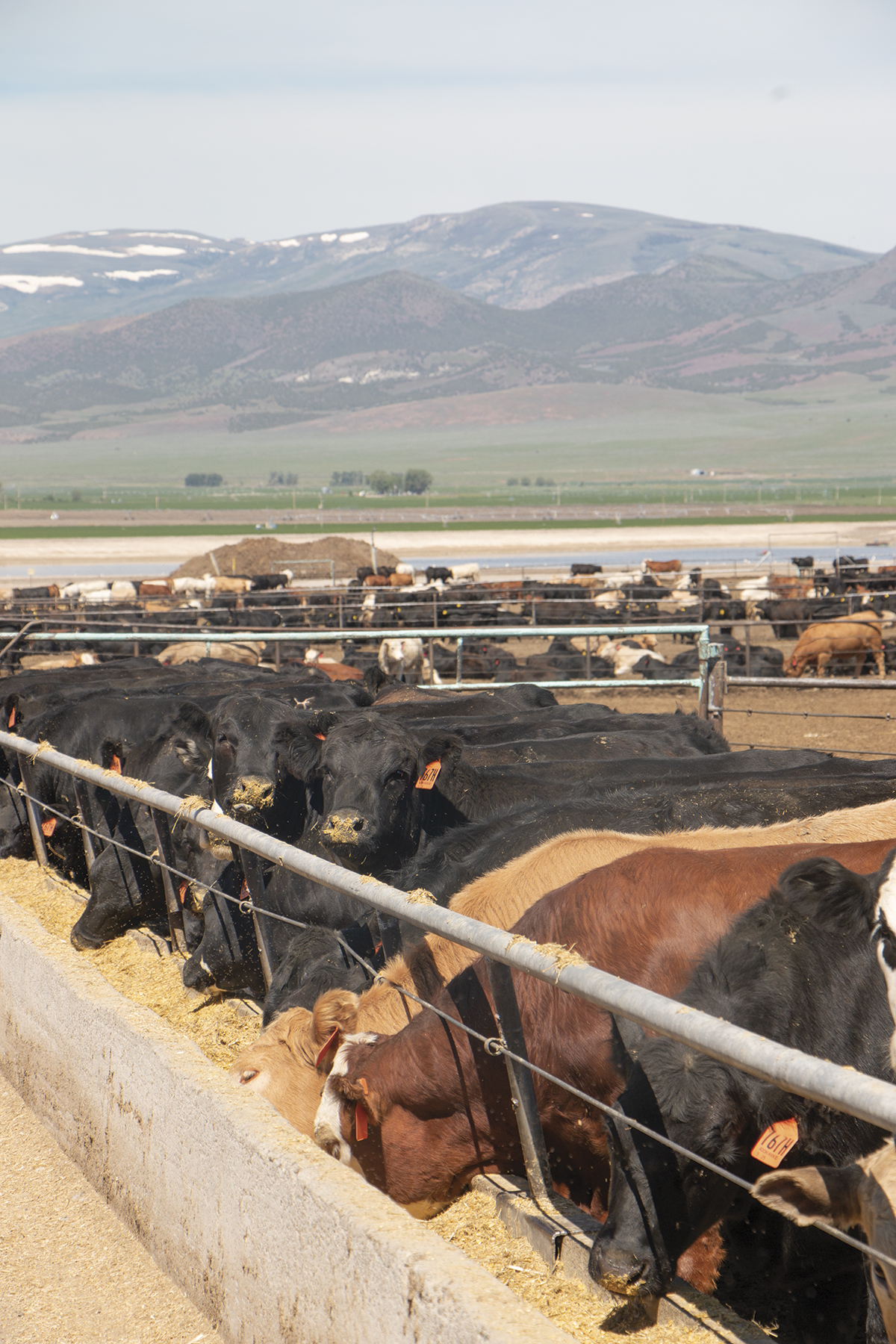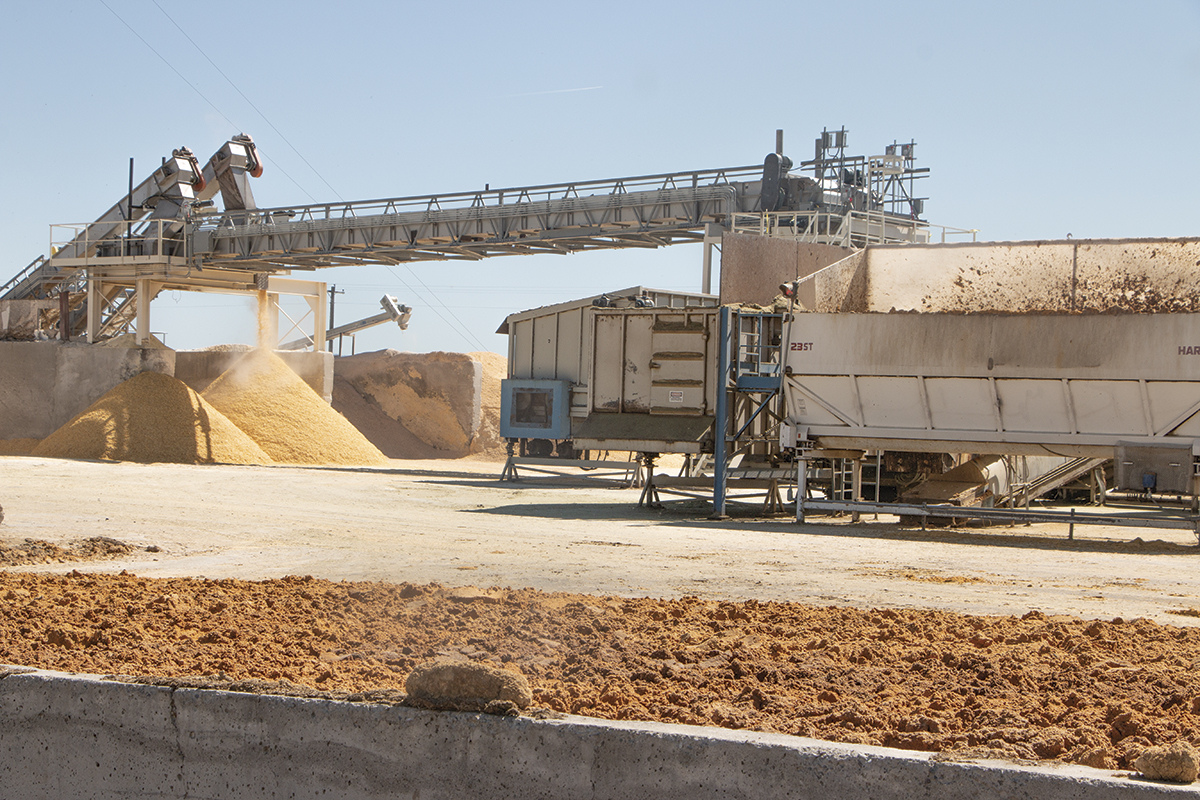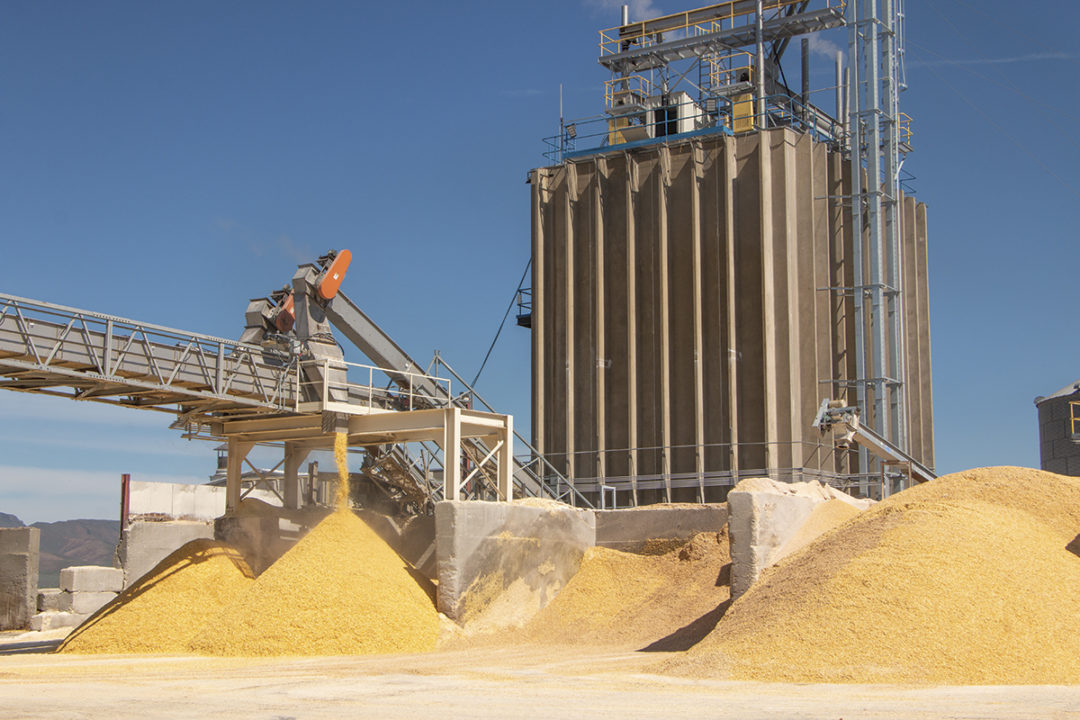Interstate Feedlot isn’t the largest feedlot in Idaho, but it is part of a larger entity, making it the “world’s largest cattle feeder.”
“Our Malta location is one of our smaller yards while our entire company, Five Rivers Cattle Feeding LLC, is the largest in the world with a one-time capacity hovering around a million head,” says Kim Rounds, beef program manager for Five Rivers Cattle Feeding.
Rounds says, “Our Idaho location is our smallest, with a capacity of 52,000. Our largest in Wellton, Arizona, has a capacity of 120,000, and we have four locations that are around 100,000 head. I’m not familiar with how Idaho stacks up when compared to the average feedyard in the U.S.”
Five Rivers Cattle Feeding LLC is listed first in the top 20 feedlots in the U.S. according to the National Cattlemen, the official publication of the National Cattlemen’s Beef Association. Operating primarily out of Johnstown, Colorado, there are 11 yards operating in Arizona, Texas, Oklahoma, Kansas, Colorado and Idaho.
Boise’s J.R. Simplot Co. is tied for seventh nationwide. The Simplot family runs 230,000 cows between two yards in Idaho and Washington. The Grand View feedlot in Owyhee County spans 750 acres. The company launched its cattle feeding business to use potato byproducts generated by food processing plants.
Founded in 1968, Agri Beef Co., owned by the Rebholtz family, is 18th and runs 115,000 head between five yards (also in Washington and Idaho). Idaho feedyards are in American Falls (Snake River Cattle Feeders) and Parma (Boise Valley Feeders).
 A portion of the feedlot is undergoing revisions for better drainage
control and to replace some of the aging facilities, leaving about a
40,000-head capacity currently. Photo by Lynn Jaynes.
A portion of the feedlot is undergoing revisions for better drainage
control and to replace some of the aging facilities, leaving about a
40,000-head capacity currently. Photo by Lynn Jaynes.
According to Five Rivers Cattle website, the Interstate Feedlot, a 52,000-head feedyard completed in 1969, is located near the small town of Malta in Cassia County. Interstate Feeders was built by E.A. Miller and has carried the names of ConAgra Cattle Feeding Company, MF Cattle Feeding and Five Rivers Ranch Cattle Feeding. Interstate Feeders became a part of the Five Rivers entity in 2002.
E.A. Miller also built a slaughterhouse in Hyrum, Utah’s rural Cache Valley in 1935. He acquired its own feedyards, livestock and farms. The company even established a trucking fleet.
“All of our company-owned cattle and most of our customer cattle are sent to JBS Hyrum plant in Hyrum, Utah,” says Arvid Carlson, Malta’s general manager. “All the beef raised at Interstate are eligible for domestic or export markets.” The beef plant is an approximate two-hour drive.
He says, “We are permitted to feed 60,000 head at one time. I would say that is in the top third as far as size. We have 37 full-time employees and support many other farmers and merchants through purchasing local feed and equipment, along with numerous truck drivers and service techs.” Interstate Feedlot feeds 250,000 bushels of grain. Carlson says, “The only byproduct we feed is wet distillers grain from the ethanol plant in Burley.”
According to Five Rivers Cattle/Interstate Feedlot’s website, their economic impact is:
- Payroll: $2 million plus
- Livestock payments: $200 million plus
- Payroll taxes: $125,000 plus
- Area unemployment: 3.4%
- Utilities: $700,000 plus
“Our waste management consists of an evaporation pond which collects all the water from our feedlot. Manure is taken by local farmers raw and we have two compost companies, Legacy Compost Products and Magic Valley Compost, which deliver compost all over the valley,” Carlson says.
The feedyard area is 160 acres with another 1,260 acres of irrigated or dry land. The area’s average precipitation is 8.72 inches of rain and an average snowfall is 12 inches.
The geographical purchasing region includes Washington, Oregon, Idaho, Montana and Nevada.
 Wet distillers grains (in the foreground) are added to the ration
whenever available in quantities. This product sources from Burley,
Idaho. Photo by Lynn Jaynes.
Wet distillers grains (in the foreground) are added to the ration
whenever available in quantities. This product sources from Burley,
Idaho. Photo by Lynn Jaynes.Five Rivers Cattle Feeding supplies cattle overseas in China. Rounds says, “The China claim has changed recently. At Kuner [Kersey, Colorado], I am the specialty beef program manager, so I oversaw some of the initial and very regulated programs that were fed and destined for China via JBS Greeley. When I started with Five Rivers four years ago, to be eligible for export to China, cattle had to be source and age verified, non-hormone treated cattle (NHTC) and vegetarian fed. This claim has transformed over the years and now requires only tallow to be withdrawn 30 days prior to harvest to ensure they are ractopamine (beta agonist) free.” She says NHTC means “They do not receive ear implants or feed-through hormones of any kind.”
Carlson was born and raised near Greeley, Colorado. He received his bachelor’s degree in animal science and ag business from Colorado State University. “I have been with Five Rivers for eight years – five at our Colorado yards and three in Malta,” Carlson says. He and his wife reside near Rupert and are raising three boys.
Carlson said he is Ag Proud because, “I really enjoy the people in our company and work hard to help my employees have successful lives at work and at home.”



.jpg?height=auto&t=1713304395&width=285)


